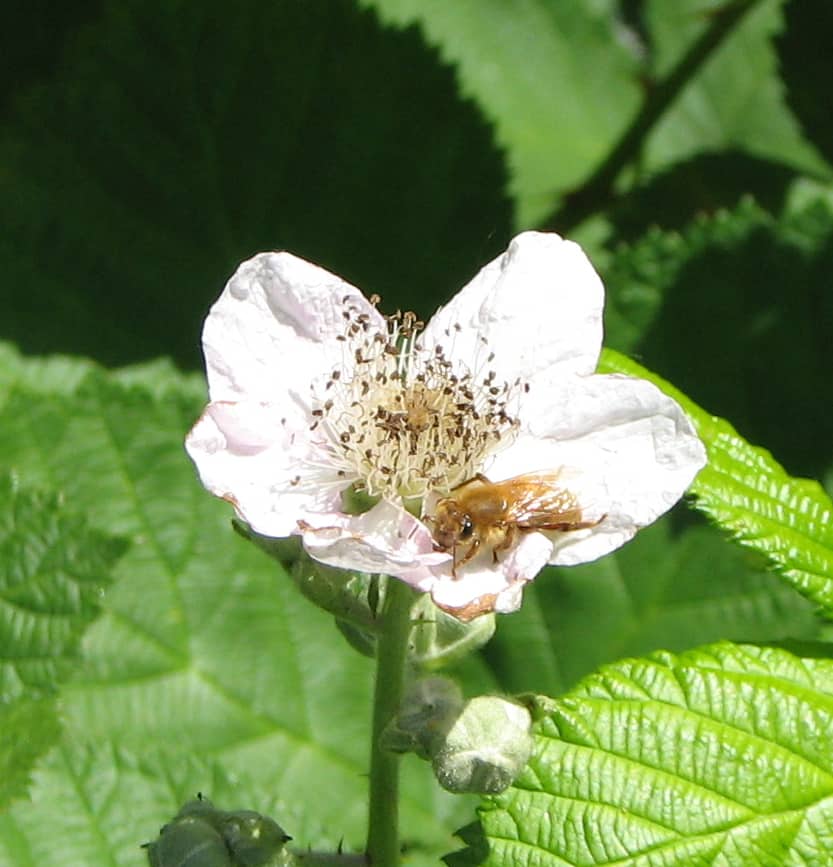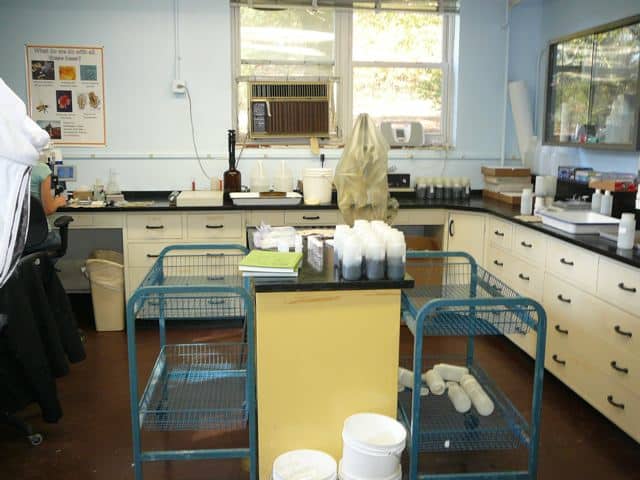Product certification is a process designed to give some level of assurance to consumers that a product is produced under certain guidelines. In honey bees, we tend to most often think about USDA Organic certification of honey. However, there are other certification programs in honey bees including Certified Naturally Grown (CNG) and queens produced by the Russian Honeybee Breeders Association. I was recently asked to inspect a new Certified Naturally Grown apiary to provide confirmation that the beekeeper was following their definition of a "natural" product, defined mostly by the absence of "any synthetic herbicides, pesticides, fertilizers, antibiotics, hormones, or genetically modified organisms". The…
Honey without Pollen
There has been an article circulating the bee world that I find really interesting and a bit disturbing. It is about how much of the honey purchased in stores lacks pollen. What happens is during the filtration stage of honey extraction, the company uses a really fine filter to remove anything that isn’t honey, so pollen, wax, propolis, bee parts, etc. To get it through the fine filter, it needs to be heated pretty high, which changes the taste of the honey. I am a big fan of straining out the random bee bits in the honey, but, to me, removing the pollen from honey…
APHIS US Honey Bee Pest and Disease Survey 2010/2011 Survey Report
The APHIS 2010/2011 Honey Bee Pest and Disease Survey report
Collecting with Bowl Traps
In my previous blog I talked about collecting bees. I am now going to talk about using another tool for collecting insects. This collection method uses bowl traps. The bowl traps are painted various colors to attract different bee species. For the past 3 years I have been using Silica flat yellow fluorescent and silica flat blue fluorescent paint for bowl colors. I also have used plain white bowls. There is an image above showing one of the bowls used for bowl trap collecting. When using the bowl traps, you will need several items. You will need the bowls which you can make yourself. For…
Teamwork
The six most important words: I admit I made a mistake. The five most important words: You did a good job. The four most important words: What is YOUR opinion? The three most important words: If you please. The two most important words: Thank You. The one most important word: We. The least important word: I. –Unknown Our team works in a previously unoccupied basement room. In a previous life, it used to be filled with boxes holding old alcohol sample bottles. Various insects had taken up residence with the absence of people, the flooring tiles were coming up and the sink drain had…
Hive tool to the rescue
Cooking is a hobby I really enjoy. I am not terribly good at it, but I like to practice. Farmer’s Markets are my favorite place to shop since you can get fresh produce and chat with some of the people who put it on your table. I purchased some kale the other weekend and decided to sauté it in a bit of olive oil and salt – properly done it tastes like popcorn. However, the oil got too hot and melted my spatula into my cast iron skillet. It took me a while to figure out how to save my beloved pan, but it came…
USDA/AIA Survey Reports 2010/2011 Winter Honey Bee Losses
USDA/AIA Survey Reports 2010/2011 Winter Honey Bee Losses http://www.ars.usda.gov/is/pr/2011/110523.htm
UCCE to Lead Technology Transfer in New Honey Bee Health Initiative
http://ucanr.org/news/?uid=1386&ds=191 UCCE to lead technology transfer in new honey bee health initiative: The technology transfer component of a newly funded nationwide initiative designed to monitor and maintain honey bee health will be hosted by UC Cooperative Extension in Butte County... UCCE news story: http://ucanr.org/news/?uid=1386&ds=191
Nationwide Partnership Seeks to Halve Honeybee Losses
News story at: http://www.ens-newswire.com/ens/may2011/2011-05-19-092.html UNIVERSITY PARK, Pennsylvania, May 19, 2011 (ENS) - A new nationwide network to monitor and maintain honeybee health is being created by the Bee Informed Partnership. Their goal is to help honeybees to recover from assaults such as mites, fungii, pesticides, competition by alien species, the disappearance of flowering plants, air pollution and climate change that have caused bee colonies to collapse not only across the United States but around the world....
PSU Leads Multidisciplinary Effort to Save Honeybees
News story at http://www.pamatters.com/2011/05/26/psu-leads-multidisciplinary-effort-to-save-honeybees/ Researchers from seven universities, beekeepers in every state, economists, epidemiologists and others have joined the Bee Informed Partnership. Senior extension associate at Penn State Dennis vanEngelsdorp is leading the project, and tells us honeybees are essential to agriculture. “About one in every three bites of food we eat is either directly or indirectly pollinated by honeybees,” he says.... News story at http://www.pamatters.com/2011/05/26/psu-leads-multidisciplinary-effort-to-save-honeybees/


